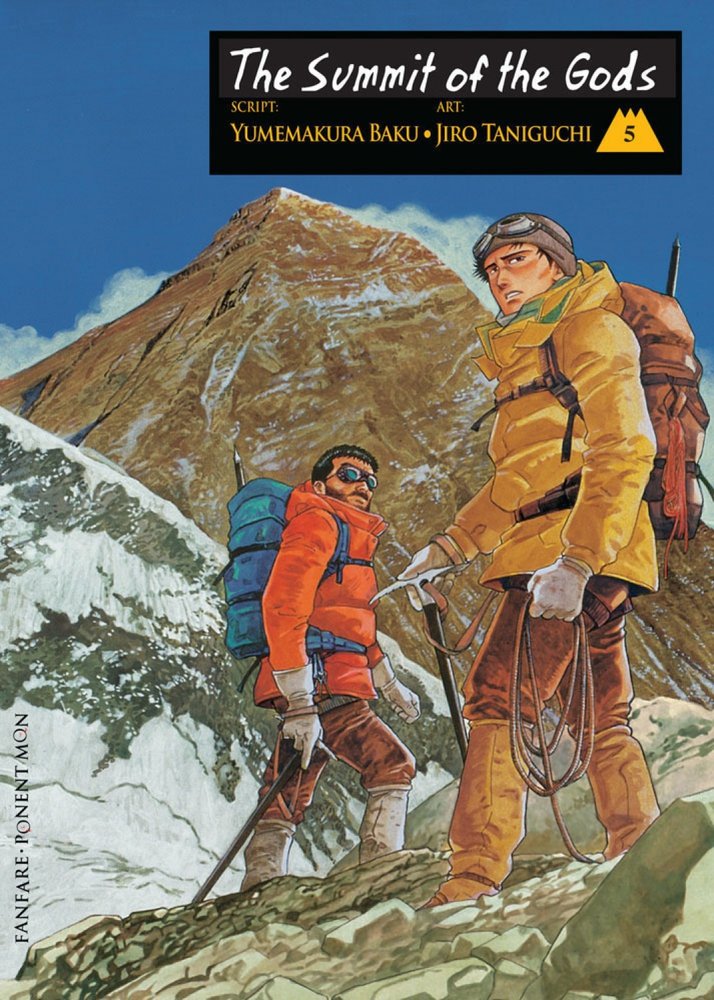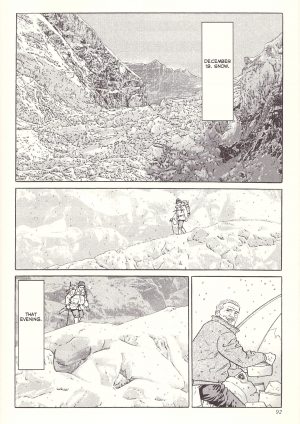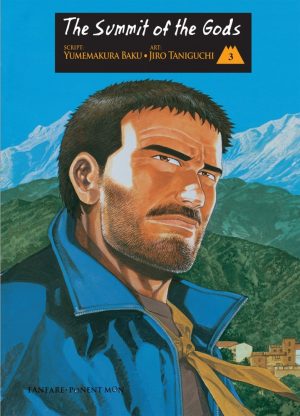Review by Ian Keogh
The cover portrait features the peak of Mount Everest, the Summit of the Gods itself, and the primary characters who’ve carried the series. Looking more pensive is Makoto Fukamachi, a photographer, but also a decent climber. Nowhere near as good, however, as Jouji Habu, known in Nepal as Bikha Sanp, one of the greatest climbers Japan has ever produced, although a fictional creation of Yumemakura Baku, who mixes actual mountaineering history into his plot. When left at the end of Summit of the Gods 4, Habu was still determined to climb to the top of Everest by the most difficult route without oxygen.
Fukamachi, who’s not capable of such a feat, fears Habu is destined to repeat George Mallory’s ill-fated path of 1924 while haunted by the feeling he’ll be the person who last sees Habu. Does it turn out that way? Well, let’s just say this concluding volume features far more of Fukamachi than Habu over the three hundred pages of amazing art from Jirô Taniguchi.
It means Taniguchi has drawn near enough 1500 pages adapting the story, and has featured repeated views of Everest’s rocks, snow and peaks as the climbing of it over the years is meticulously detailed. This doesn’t indicate a lack of variety. Taniguchi brings the mountaineering experience to life via work that’s evocative, character rich and plain beautiful, the panel and page compositions stunningly considered.
Summit of the Gods 5 starts with Fukamachi descending to base camp, switches to Habu climbing upward, and thereafter everything is from Fukamachi’s point of view. The way his life changes when returning to Japan is cleverly foreshadowed, and also smart is the sense of foreboding that once events have been explained they’re destined to be repeated. That’s the device used for the final sequence, and events leading up to it aren’t as convincing as the remainder of the story. Fukamachi develops the compulsion to conquer Everest, perhaps not with the same intensity as Habu, but enough that he can’t settle back home. It’s to set up an actually very emotional finale that must take place on Everest, a scene inviting further speculation, yet also a definitive answer to a question posed at the very start. It’s powerful, heartwarming and tragic, very fitting as all three terms define mountaineering.
Few other graphic novels deal with the subject. Perhaps the crossover between mountaineering and comics is small, but it’s difficult to conceive the experience being conveyed as meticulously, masterfully and stylishly as it is in Summit of the Gods. A little hiccup toward the end here is no real blemish on five volumes of magnificence.





